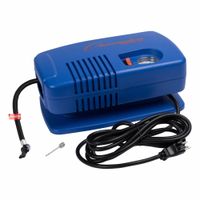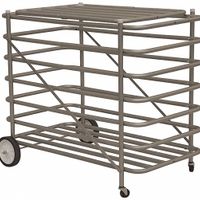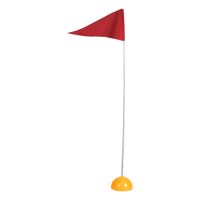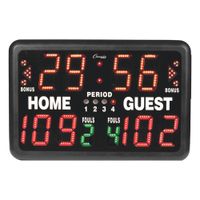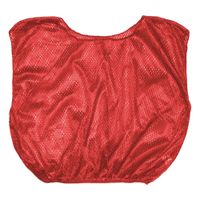Call +(254) 703 030 000 / 751 483 999 / 721 704 777
- Home
- Furnishings Appliances Hospitality
- Fitness Sports Recreation
- Team Sports Physical Education Equipment
- Coaching Scoring Maintenance Equipment
.....Read More
Frequently Asked Questions
What is the best equipment for coaching and scoring in sports?
The best equipment for coaching and scoring in sports includes a combination of technology and traditional tools to enhance performance analysis, communication, and record-keeping.
1. **Video Analysis Software**: Tools like Hudl, Dartfish, or Coach's Eye allow coaches to review game footage, analyze player performance, and provide visual feedback. These platforms often include features for drawing on the video, slow-motion playback, and tagging key moments.
2. **Wearable Technology**: Devices such as GPS trackers, heart rate monitors, and accelerometers provide real-time data on player movements, workload, and physiological responses. Brands like Catapult and Polar offer comprehensive systems for tracking and analyzing this data.
3. **Digital Scoreboards and Apps**: Modern scoreboards with wireless connectivity and apps like GameChanger or iScore provide real-time scoring updates, statistics tracking, and can integrate with social media for live updates.
4. **Communication Systems**: Wireless headsets and intercom systems facilitate clear communication among coaching staff, especially in team sports where quick decision-making is crucial.
5. **Smart Equipment**: Balls, bats, and other equipment embedded with sensors (e.g., Wilson's Smart Basketball or Zepp's Smart Bat) provide data on speed, spin, and impact, offering insights into technique and performance.
6. **Performance Management Software**: Platforms like TeamSnap or SportsEngine help manage team logistics, scheduling, and communication, streamlining administrative tasks for coaches.
7. **Traditional Tools**: Whiteboards, clipboards, and stopwatches remain essential for strategy planning, quick notes, and timing drills.
Combining these tools allows coaches to enhance training efficiency, improve player performance, and maintain accurate records, ultimately leading to better outcomes in sports.
How do scoreboards and scorer tables work in real-time tracking?
Scoreboards and scorer tables in real-time tracking function through a combination of hardware and software systems designed to capture, process, and display data instantaneously.
1. **Data Collection**: Sensors, cameras, or manual input devices collect data. In sports, this could be player statistics, scores, or time. For example, RFID chips in jerseys or balls can track player movements and ball positions.
2. **Data Processing**: The collected data is sent to a central processing unit. This unit uses algorithms to interpret the raw data, converting it into meaningful statistics or scores. For instance, in basketball, the system calculates points, fouls, and time remaining.
3. **Real-Time Updates**: The processed data is transmitted to the scoreboard and scorer tables. This is often done via wireless networks to ensure minimal delay. The use of high-speed internet and dedicated servers ensures that updates occur in real-time.
4. **Display**: The scoreboard, often an LED or LCD screen, displays the data in a user-friendly format. This includes scores, time, player stats, and other relevant information. Scorer tables, typically equipped with computers or tablets, allow officials to input and verify data manually if needed.
5. **Integration**: Modern systems integrate with broadcast networks and online platforms, allowing real-time data to be shared with audiences worldwide. APIs and data feeds enable seamless integration with apps and websites.
6. **Redundancy and Accuracy**: Backup systems and manual verification ensure data accuracy and reliability. In case of technical failures, manual input can maintain the flow of information.
These systems are crucial for maintaining the integrity and excitement of live events, providing audiences with up-to-the-second information.
What are the essential maintenance tools for sports equipment?
Essential maintenance tools for sports equipment include:
1. **Cleaning Supplies**: Mild detergents, disinfectant sprays, and microfiber cloths are crucial for cleaning and sanitizing equipment like helmets, pads, and gym machines.
2. **Lubricants**: Silicone or Teflon-based lubricants are necessary for maintaining moving parts in equipment such as treadmills, bicycles, and elliptical machines.
3. **Repair Kits**: These include patch kits for inflatables, stringing kits for rackets, and sewing kits for fabric repairs.
4. **Wrenches and Screwdrivers**: Essential for tightening bolts and screws on equipment like bikes, weight machines, and adjustable benches.
5. **Air Pumps**: Necessary for inflating balls, tires, and other inflatable sports gear. A pressure gauge is also useful to ensure proper inflation levels.
6. **Sharpening Tools**: For maintaining the edges of skates, skis, and other bladed equipment.
7. **Adhesives and Tapes**: Sports tape, duct tape, and specialized adhesives for quick fixes and securing grips or bindings.
8. **Brushes and Combs**: Used for cleaning dirt and debris from cleats, spikes, and other footwear.
9. **Replacement Parts**: Spare parts like strings, grips, and laces for quick replacements.
10. **Protective Covers and Cases**: To protect equipment from dust, moisture, and damage during storage and transport.
11. **Measuring Tools**: Tape measures and calipers for ensuring correct dimensions and adjustments.
12. **Anti-Rust Sprays**: To prevent corrosion on metal parts of equipment stored in humid environments.
13. **Organizers and Storage Solutions**: Racks, hooks, and bins to keep equipment organized and in good condition.
These tools help ensure that sports equipment remains in optimal condition, prolonging its lifespan and maintaining performance.
How do you organize and transport sporting goods effectively?
To organize and transport sporting goods effectively, start by categorizing items based on type, size, and frequency of use. Use clear bins or labeled containers for easy identification and access. For smaller items like balls, gloves, or protective gear, use mesh bags or compartmentalized storage boxes. Larger items like bats, rackets, or skis can be stored on wall-mounted racks or in vertical storage units to save space.
For transportation, choose the right vehicle or trailer with adequate space and secure anchoring points. Use padded bags or cases for delicate equipment to prevent damage. Employ bungee cords or straps to secure larger items and prevent movement during transit. For team sports, consider using a rolling duffel bag or a wheeled cart to transport multiple items efficiently.
Implement a checklist system to ensure all necessary equipment is packed and accounted for before and after events. Regularly clean and maintain equipment to extend its lifespan and ensure safety. For long-term storage, keep items in a cool, dry place to prevent damage from moisture or extreme temperatures.
Utilize digital tools or apps to track inventory and schedule maintenance or replacements. This ensures that equipment is always in optimal condition and ready for use. By following these steps, you can effectively organize and transport sporting goods, ensuring efficiency and safety.
What is the proper way to use field line markers and flags?
Field line markers and flags are essential tools for marking boundaries, hazards, or specific areas in various settings such as sports fields, construction sites, and agricultural lands. Here’s how to use them properly:
1. **Planning**: Before placing markers or flags, assess the area to determine the boundaries or specific points that need marking. Create a layout plan to ensure accurate placement.
2. **Selection**: Choose appropriate markers or flags based on the environment. For sports fields, use bright, weather-resistant markers. In construction, opt for durable, high-visibility flags.
3. **Spacing**: Determine the spacing between markers. For straight lines, place them at regular intervals to maintain visibility. In sports, markers are often placed at key points like corners or goal lines.
4. **Installation**: Insert markers or flags securely into the ground. For soft soil, push them in by hand. In harder ground, use a tool to create a pilot hole. Ensure they are upright and visible from a distance.
5. **Visibility**: Ensure markers are visible under various conditions. Use contrasting colors against the background. For night visibility, consider reflective markers.
6. **Safety**: Place markers in a way that does not pose a tripping hazard. In construction, ensure they are visible to machinery operators.
7. **Maintenance**: Regularly check markers for damage or displacement. Replace or reposition them as needed to maintain accuracy.
8. **Removal**: Once the purpose is served, remove markers promptly to avoid confusion or environmental impact.
By following these steps, field line markers and flags can effectively delineate areas, enhance safety, and ensure clarity in various applications.
How do you inflate game balls correctly with air pumps and needles?
1. **Gather Materials**: You need an air pump, inflation needle, and the ball to be inflated.
2. **Check Ball Specifications**: Locate the recommended pressure range on the ball, usually measured in psi (pounds per square inch).
3. **Prepare the Pump**: Attach the inflation needle to the air pump. Ensure it is securely fastened to prevent air leaks.
4. **Lubricate the Needle**: Lightly moisten the needle with water or a drop of glycerin to prevent damage to the ball valve.
5. **Insert the Needle**: Carefully insert the needle into the ball’s valve. Ensure it is straight to avoid puncturing the inner bladder.
6. **Inflate the Ball**: Begin pumping air into the ball. Use a pressure gauge to monitor the psi, ensuring it stays within the recommended range.
7. **Check for Proper Inflation**: Periodically stop and check the ball’s firmness. It should be firm but not overly hard. For specific sports, like basketball, the ball should bounce to a certain height when dropped.
8. **Remove the Needle**: Once inflated to the correct pressure, carefully remove the needle from the valve.
9. **Seal the Valve**: If the ball has a valve cap, replace it to prevent air leakage.
10. **Test the Ball**: Bounce or squeeze the ball to ensure it feels right and holds air properly.
11. **Store Properly**: Keep the ball in a cool, dry place to maintain its pressure and shape.
By following these steps, you ensure the ball is inflated correctly, enhancing performance and longevity.
What are the benefits of using scrimmage vests in practice sessions?
Scrimmage vests, also known as pinnies or bibs, offer several benefits during practice sessions:
1. **Team Differentiation**: They help in easily distinguishing between different teams or groups, especially in mixed or large training sessions, enhancing organization and reducing confusion.
2. **Focus on Strategy**: By clearly identifying team members, players can focus more on strategic play and positioning rather than spending time identifying teammates.
3. **Improved Communication**: With clear visual cues, players can communicate more effectively, knowing exactly who is on their team, which enhances teamwork and coordination.
4. **Versatility**: Scrimmage vests are easy to put on and take off, allowing coaches to quickly change team compositions and try different tactical setups without wasting time.
5. **Inclusivity**: They come in various sizes and colors, accommodating all players and ensuring everyone is included in practice drills.
6. **Cost-Effective**: Vests are relatively inexpensive, making them a cost-effective tool for teams at all levels, from amateur to professional.
7. **Durability**: Made from lightweight, breathable materials, they are designed to withstand rigorous use and frequent washing, ensuring longevity.
8. **Enhanced Focus**: By reducing visual clutter, they help players concentrate on the game, improving their situational awareness and decision-making skills.
9. **Safety**: Brightly colored vests increase visibility, reducing the risk of accidental collisions during fast-paced drills.
10. **Motivation and Engagement**: Wearing a team color can boost morale and foster a sense of belonging, motivating players to perform better.
Overall, scrimmage vests are a practical and effective tool in sports training, facilitating better organization, communication, and performance.
